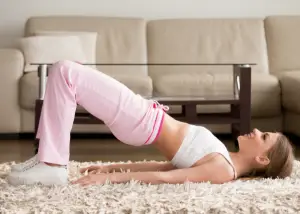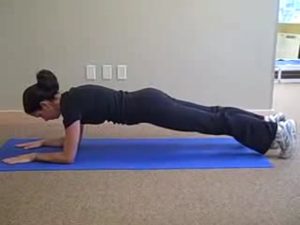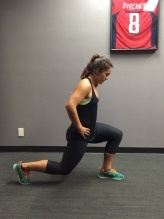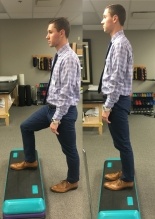 Riding a bike is not only fun, but it’s also great exercise. After a hip replacement, it can be a fantastic way to stay active. You can quickly return to cycling during a successful rehabilitation program.
Riding a bike is not only fun, but it’s also great exercise. After a hip replacement, it can be a fantastic way to stay active. You can quickly return to cycling during a successful rehabilitation program.
Patients often report that getting a hip replacement is the best decision they ever made! It can restore mobility, function and greatly reduce discomfort and pain.
Bicycling is typically much more comfortable after a hip replacement, and patients find great joy in being able to extend their rides.
General Recovery Timeline After a Hip Replacement:
- 0-2 weeks: Movement precautions, depending on the type of procedure you had. Begin using an upright stationary bike for ROM. You might begin pedaling backward to start.
- 2-6 weeks: Increase time and resistance on a stationary bike while pedaling forwards. You can aim to complete 3 weekly sessions at 30 minutes each.
- 6-12 weeks: Goal of symmetrical and pain-free range of motion of the hips. Begin outdoor cycling on level surfaces.
- 12-20 weeks: Continue rehab and progress outdoor cycling as tolerated.
5 Helpful Tips for Riding s Bike After a Hip Replacement
How to safely get on and off your bike:
Avoid raising your knee higher than your hip by swinging your leg over the seat of your bike to mount/dismount.
- Start by swinging your affected leg over while you plant from your unaffected leg. The planted leg needs to be able to tolerate rotation and flexion motions well.
- Hold onto both handlebars when you get on or off your bike to keep it still and stable.
- To get off the bike, plant you unaffected leg on the ground, tip the bike on it’s side and swing the affected leg off the bike
Safely return to bicycling:
Following the direction of your surgeon or physical therapist, you’ll complete a gradual progression of indoor cycling on the stationary bike. Once you’ve been cleared to attempt outdoor cycling, use the tips below to make sure you stay safe.
- Start on easy and level terrain, like a wide paved bike path.
- When you first begin bicycling outdoors, keep the sessions short (10-15 minutes), then gradually increase them over time.
- Make sure your bike fits you – see the section below.
- Incorporate other low-impact activities into your exercise routine, like aquatics and strength training. Be sure to discuss appropriate swim strokes with your physical therapist before you begin swimming.
It would be beneficial to include a warm-up and cool-down routine in your bicycling activities. Warm-up with simple exercises like half squats, light hip rotations, and half rear lunges. During your cool-down complete gentle stretches to any areas of tension, like your hip flexor, hamstrings, and calves.
Set your bike up:
For the most comfortable and safe biking experience, your bicycle should be set up to the dimensions of your body. Use the tips below to adjust your bike for you!
- Make sure your bicycle frame is the right size for you: when straddling the bike, you should have 1-2” of clearance between your crotch at the top tube.
- Seat Height: Your leg should be fully extended with a very slight bend in the knee when you reach the bottom of your downstroke.
- Handlebars: the height of your handlebars should be higher than the height of your seat, and your riding position should be mostly upright.
Pro tip: The experts at your local bike shop can also help you find the best setup.
Exercises to help you return to bicycling:
Along with your scheduled physical therapy rehabilitation, you can use the following exercises to strengthen your hip. Be sure to discuss your desire to return to bicycling with your physical therapist so they can better craft your rehab program for your needs.
Bridging
Lay down on your back and place your feet on the floor with your knees bent. Draw your belly button towards your spine and contract your glutes to lift your hips from the ground. Hold for a few seconds, then return to start. Repeat for 10-12 reps and 3 sets.

Advance this exercise by adding a resistance band around your knees.
Plank
Begin in the quadruped position on the floor. Extend your legs out behind you to come into a plank. Hold for 30seconds, then return to start. Complete 5 sets. Avoid letting your body sag or rotate. You may come down to your forearms if a full plank is too difficult for now.

Advance this exercise by completing leg extension lifts while holding your plank.
Lunge
Standing up, step one foot forward and descend into a lunge. Ensure that your front knee does not extend beyond your toes. Push up from your front heel to return to stand. Repeat for 10 reps and 2 sets on each leg.

Advance this exercise by adding a pair of hand weights or lunging in different directions (rear and laterally).
Step-ups
Standing in front of a few steps, place one foot on the stairs and step to bring your other foot to meet it. With control, step back down to the start while still facing forward. Hold the handrail for balance, but you can challenge yourself to go without it. Complete 12 step-ups and 2 sets on each leg.

Advance this exercise by stepping up higher.
Things to Avoid While Riding a Bike:
- Avoid riding a bike that has not been adjusted to your fit.
- Try to keep your cadence (the rate you’re pedaling) high versus mashing the pedals in a difficult gear.
- Avoid any terrain that you are not comfortable with. Remember that your progression to bicycling should be gradual.
FAQ About Riding a Bike After a Hip Replacement
When Can You Ride a Stationary Bike After a Hip Replacement?
You will be able to ride a recumbent elliptical as soon as the next day after a hip replacement. These are great to help speed up healing.
You’ll be able to start riding a traditional stationary bike between 2-6 weeks after surgery to gain endurance and strength. Just make sure to fit the bike to you each time that you use the stationary bike.
Can I Ride a Bike Without Breaking Surgical Precautions?
You absolutely can. This does depend on which surgical approach was used for your hip replacement, an anterior or a posterior approach. The surgical hip precautions and what not to do after a hip replacement are especially important to follow during the first 6 weeks after surgery.
To avoid breaking precautions, be sure to tip the bike down to make it easier to get the leg on and off the bike.
Which Hip Replacement Approach is Better for Riding a Bike?
In this instance there isn’t a “best” approach. You simply want to find a surgeon that you trust and feel confident in and go for whatever approach they recommend.
Can I Wear Clip Pedals with Biking After a Hip Replacement?
Absolutely, just wait for 6 weeks after surgery before using clip pedals. You can begin riding a bike or cycling before 6 weeks but start on flats.
Starting on flat pedals helps avoid internal rotation in the leg and makes it easier to put the foot down as you get back to cycling.
After 6 weeks from surgery you can return to use clip pedals but loosen them a bit more than your used to avoid excessively hard rotation to get out of the clips until after 12 weeks from surgery.
Conclusion:
After recovering from your surgery, you’ll likely have less pain, more mobility, and greater function. Biking is an excellent form of exercise and a great way to stay in shape! Helmet up and roll on!
About the Author:
Lisa Woolridge, DPT
After graduating from the University of Texas Health Science Center at San Antonio, Lisa served as a physical therapist in the Army. She treated orthopedic injuries in soldiers and family members, ran fitness testing clinics, and conducted wellness classes. Lisa left the military when she became a mother and remains involved in the medical field through freelance science writing and consulting.
References:
Total Hip Replacement Exercise Guide. American Academy of Orthopaedic Surgeons OrthoInfo. 2017. https://orthoinfo.aaos.org/en/recovery/total-hip-replacement-exercise-guide/
Total Hip Replacement Post-Op Clinical Practice Guideline. The Ohio State University Wexner Medical Center.
Other Great Rehab Related Articles
How to Stay Active After Cervical Fractures: Expert Tips and Advice
Dealing with Painful Stairs After Ankle Replacement Surgery
Walking After a Total Ankle Replacement: Tips for a Successful Recovery
Exercises While Non-Weight Bearing After Ankle Replacement: Elevation, AROM, Leg Raises, and More
Ankle Pain with Stairs: Causes and Home Treatment Options
5 Common Mistakes You’re Making After an Ankle Sprain
Disclaimer: The information provided in this post is for educational purposes only. This is not a substitute for a medical appointment. Please refer to your physician before starting any exercise program.






